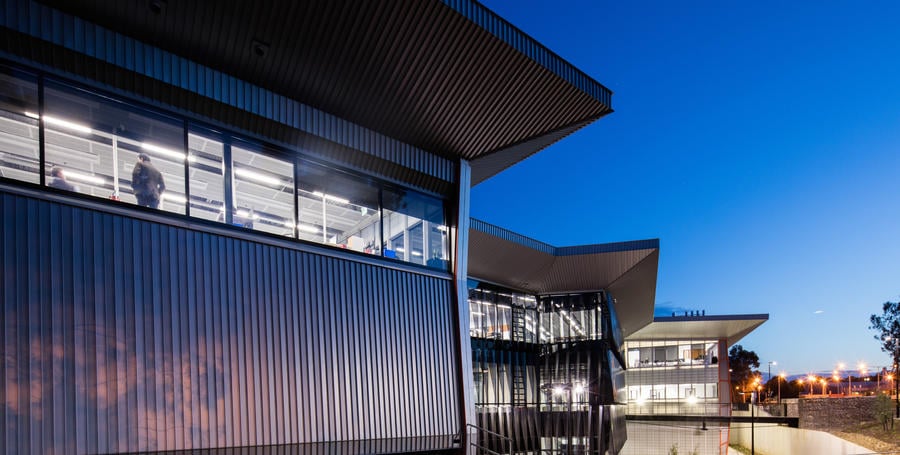Logan, UT: Paeonia lactiflora is a high-value crop with a temperature-dependent growth response that requires worldwide production to satisfy year-round demand. The objective of this study was to evaluate production and timing of ‘Coral Charm’ peony as a cool-season crop in the US Intermountain West.
Growers across the United States have developed local niche markets for specialty cut-flower crops that are in demand by consumers for their unique blooms and fresh quality. Included in this growth are nontraditional regions for cut-flower production, such as the US Intermountain West. However, environmental conditions in the high-elevation, semi arid climate limit production quantity, quality, and timing.
Applying established temperature thresholds from greenhouse to field production may help advance and stagger harvest, thus benefiting small farms that do not have access to indoor growing spaces. One primary method for advancing field production is through the use of high tunnels (HTs), which allow for natural chilling in winter and passive heating in spring. The use of low tunnels (LTs) within HTs can increase air temperature by 4.9 °C during the day and by 3.1°C at night. However, targeting soil heating (H) as an early-season method to advance production has not been tested on peony in HT or field environments, where soil temperature is less coupled with air temperature.
Trialing in HTs, LTs, and with H methods to advance and stagger peony production may allow growers in cool regions to target peak marketing times. ‘Coral Charm’ has exceptional market demand in the US Intermountain West because of its long stem length and double bloom, which fades from bright coral to cream. Although an early-blooming cultivar, harvest occurs from mid May to early June under unforced field conditions in northern Utah. Advancing peak production to meet the demand for Mother’s Day (early to mid May), a top holiday for cut-flower sales, and for Memorial Day (late May) may create premium pricing options for growers. Therefore, the objectives of this study were 1) to evaluate the bloom timing and production duration of peony ‘Coral Charm’ with HTs, LTs, and H vs. unprotected field conditions in northern Utah; and 2) to analyze the total yield and quality of stem production from each management practice and assess market outcomes.
The HT alone advanced the initial harvest of ‘Coral Charm’ by 20 to 25 d in northern Utah, which allowed for production in time for the Mother’s Day holiday, compared with the natural timing of unprotected field production in late May. The use of LTs and H further advanced initial and peak harvest compared with control practices by 3 to 16 d in the HT and 6 to 7 d in the field, allowing staggered harvest for a total production season length of 34 to 38 d. Although demand remained high throughout the production season (i.e., all stems were sold-out via preorder to florists), the market only commanded premium pricing before the Mother’s Day holiday. Through earlier onset of H practices, HT production began as early as the first week of April in 2021, indicating the potential in reaching other early holiday markets, such as Easter, in some years. Advancing and staggering early-season production of ‘Coral Charm’ peony demonstrates peony as a promising, early-season crop for high-elevation growers without greenhouse access, as well as indicates the ability to advance and schedule production ahead of targeted markets.
Overall, HTs advanced the production of early-season peony cut flowers compared with unforced field production in the US Intermountain West, with added LT and H practices staggering harvest up to 38 days. Chilling requirements were met by January, and earlier application of H and LTs in 2020 and 2021 further advanced and staggered field production, although the premium early-market pricing did not outweigh the greater input costs for the tested markets. Other early-season benefits include earlier seasonal association of local flowers with consumers, farm name recognition from innovative production timing, and additional opportunity to support and use farm labor. Although this work is aimed toward high-elevation growers in USDA Hardiness Zone 5 regions, the findings add to the collective body of research that furthers peony field production methods and maximizes HT systems for small-scale growers.
This project was prompted by the growth in cut flower farming and markets in Utah, the need for perennial crop and protected cultivation research for regional environmental conditions, and to develop interdisciplinary programs between soil science and horticulture. ‘Coral Charm’ peony was targeted for research because it became a coveted cut flower crop in Utah, with unprecedented demand, limited supply, and potential for harvest timing optimization. The project team included Maegen Lewis, who conducted the research as part of her MS program, Melanie Stock (PI and advisor), Brent Black, Dan Drost, and Ruby Ward.
Dr. Stock is Assistant Professor/Urban and Small Farm Speialist at Utah State University. Her lab focuses on high-value crops and resource use efficiency to improve the environmental sustainability and economic viability of small farms.








